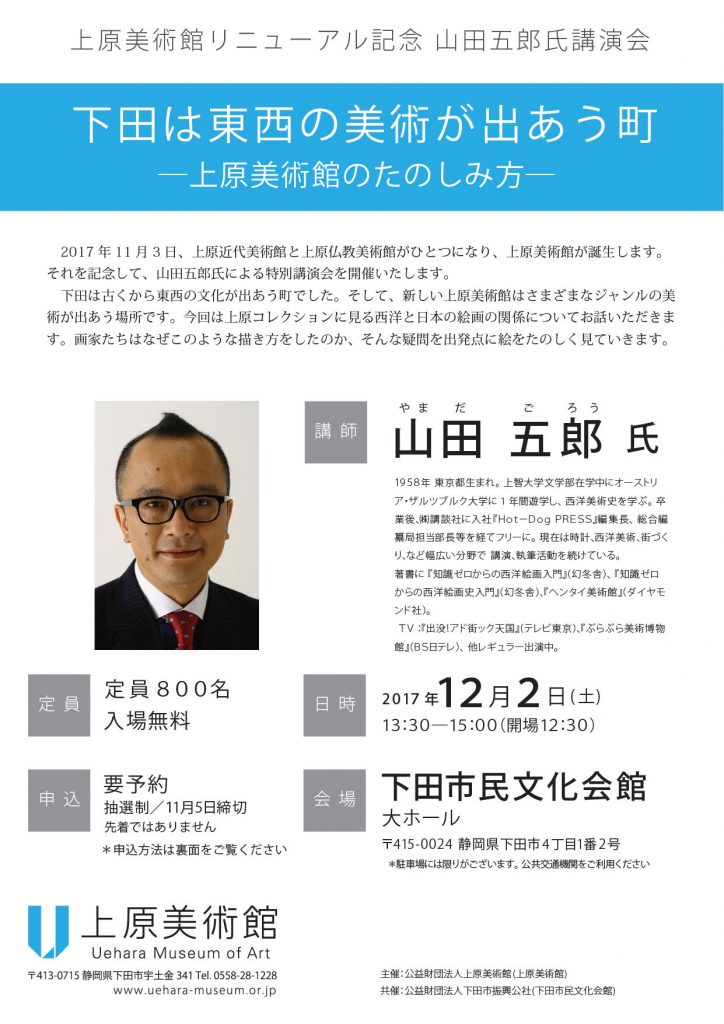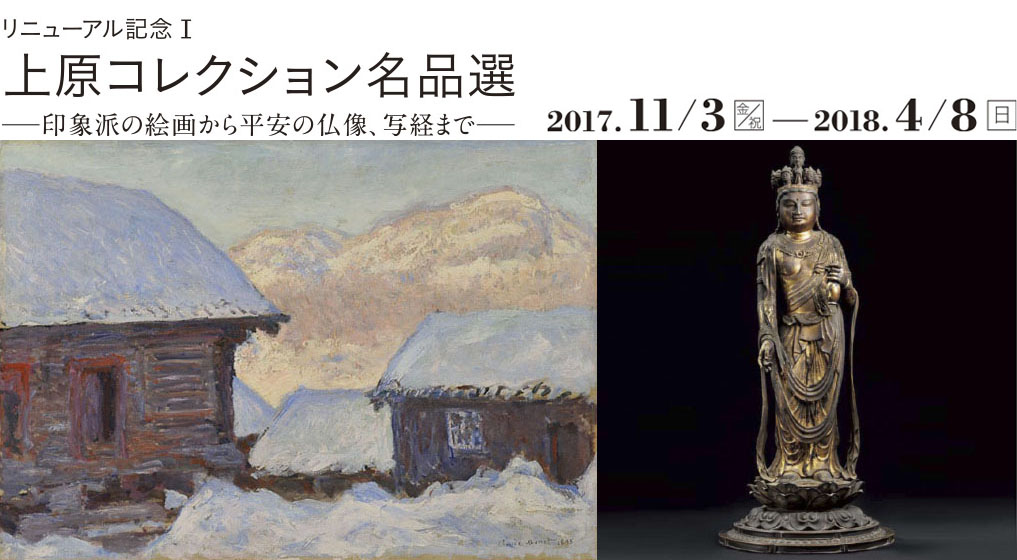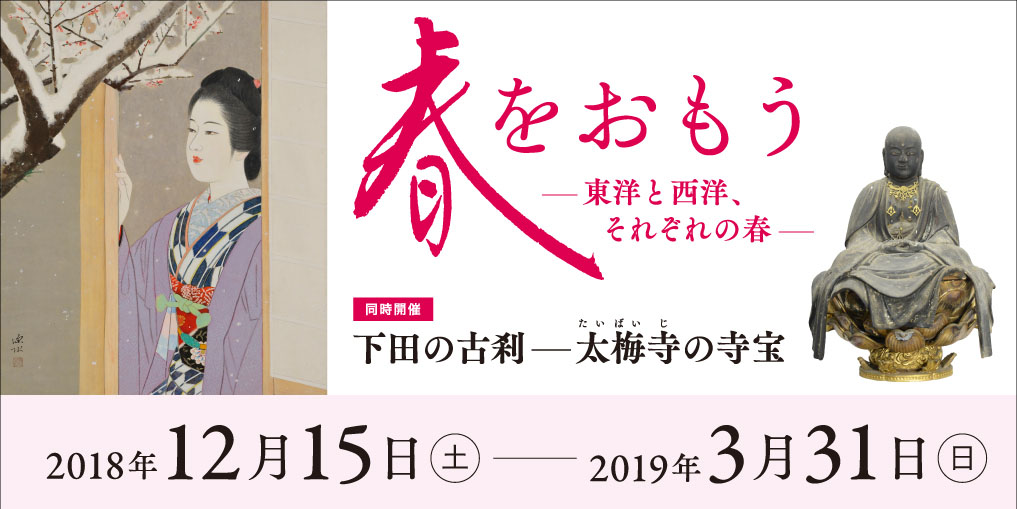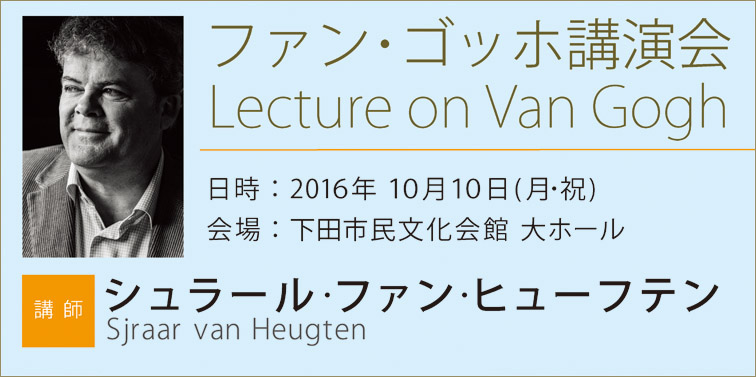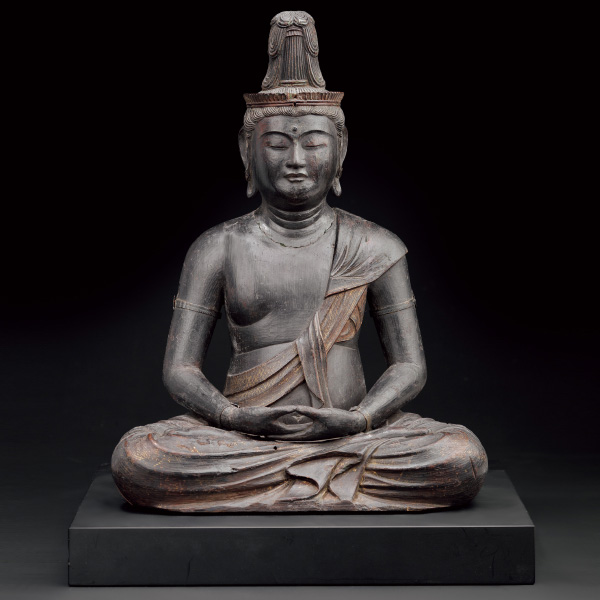リニューアル記念講演会 『下田は東西の文化が出会う町―上原美術館のたのしみ方』
【仏教館・近代館】リニューアル記念 上原コレクション名品選 ―印象派の絵画から平安の仏像、写経まで―
top calendar
| 10月 | 11月 | ||||||||||||||||||||||||||||||||||||||||||||||||||||||||||
| 1日 | 2日 | 3日 | 4日 | 5日 | 6日 | 7日 | 8日 | 9日 | 10日 | 11日 | 12日 | 13日 | 14日 | 15日 | 16日 | 17日 | 18日 | 19日 | 20日 | 21日 | 22日 | 23日 | 24日 | 25日 | 26日 | 27日 | 28日 | 29日 | 30日 | 31日 | 1日 | ||||||||||||||||||||||||||||
講演会「ゴッホ若き日のデッサン《鎌で刈る人》、そして晩年の絵画へ」のお知らせ
2016年10月10日(月・祝)に、開催中の展覧会「はじまりの絵画―画家の新たなものがたり」に関連し、世界的なゴッホ研究者として知られるシュラール・ファン・ヒューフテン氏をお招きしての講演会を開催します。
ゴッホは画業のはじまりになぜミレーを模写したのか、晩年に再び模写した意味とは何だったのか、ゴッホ芸術の秘密とその魅力についてお話いただきます。
入場は無料です。お申し込み方法は、PDFをご参照ください ※終了しました
当館ウェブサイトをリニューアルしました
上原近代美術館ではウェブサイトを全面的に見直し、アクセス、コレクションなどのコンテンツを快適に閲覧いただけるようページのデザイン、構成を設計した新しいサイトを本日リリースいたしました。
当館では、これからも使いやすく見やすいウェブサイトを目指してまいります。引き続きよろしくお願い申し上げます。
展覧会「はじまりの絵画―画家の新たなものがたり―」を開催中です
7月22日(金)〜11月27日(日)の期間中、展覧会「
画業のはじまりに敬愛するミレーの版画を模写したゴッホのほか、
こども向け 夏のワークショップ 2016
日本画を描いてみよう~水墨画編~
講師 牧野伸英 先生(日本画家、当館日本画教室講師)
講師の牧野先生と一緒に墨と水を使って、水墨画を描いてみませんか?
夏休みを使って、ぜひ日本画にチャレンジしてみてください!
| 日 時 | 7月23日(土) 13:00~(所要2時間程度) |
| 場 所 | 上原近代美術館 会議室 |
| 対 象 | 小学生 |
| 定 員 | 20名 |
| 持 物 | 飲みもの(熱中症予防のためご持参ください)、ぞうきん |
| その他 | 墨で汚れてもよい服装でお越しください ※参加無料(画材は当館より貸出します) |
鉛筆デッサン入門講座!
講師 小野憲一 先生(現代美術作家、当館デッサン・水彩画教室講師)
講師の小野先生より鉛筆デッサンの基礎から丁寧にお教えします。
未経験の方から美術学校への進学希望者までお気軽にご参加ください。
| 日 時 | ① 8月12日(金)、13日(土) 2日間コース ② 8月15日(月)~17日(水) 3日間コース いずれも13:00-16:00 ※①、②ともに内容は同じです。両方の受講も可能です。 |
| 場 所 | 上原近代美術館 会議室 |
| 対 象 | 小学校5年生~高校生 |
| 定 員 | 各10名 |
| 持 物 | 飲みもの(熱中症予防のためご持参ください)、カッター |
| その他 | ※参加無料(画材は当館より貸出します) |
申込方法
美術館受付、お電話にて申込できます
①ご希望のイベント名、②お名前、③年齢・学年、④ご住所、⑤電話番号、⑥参加人数をお伝えください。
*応募は定員になり次第締め切らせていただきます。
Tel. 0558-28-1228

